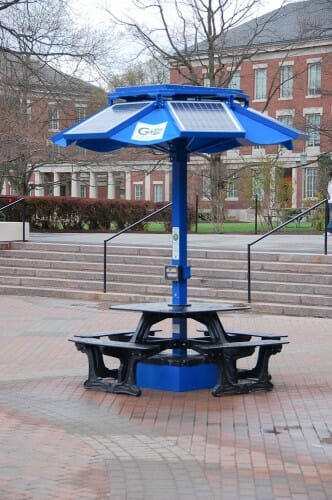A few weeks ago, I wrote that opposition to the Keystone was never about the Ogallala Aquifer. Polluting the water was a simply a convenient talking point that might play better with the American public than the true goal, which is to shut down the development of new sources of North American oil. I got a lot of comments and email that I was making this up, but in fact its pretty clear that opposition to the pipeline pre-dated knowledge even of its route. Here is a environmental group's presentation from 2008 which advocates opposition to all pipelines (without any reference to their routes) out of the Canadian tar sands as a strategy to halt their development.
Postscript: I really have little use for discussions about funding amounts and sources of various causes. I find it largely irrelevent. So I post this only because this week we are talking about the Heartland Institute's funding of climate skeptics as revealed by hero (if you are an environmentalist blog) or thief Peter Gleick. Heartland sends a portion of its $6 million budget to support various climate skeptics, and somehow this "revelation" has environmentalists running in circles screaming rape. But Heartland's pitiful few millions seem a joke in comparison to the environmental funding torrent. Take this example from the Canadian tar sands issue, just a single one of a myriad of climate-related issues getting millions, even billions of dollars of funding.
Northrop’s presentation promised funding from the Rockefeller Brothers Fund and the William & Flora Hewlett Foundation in the amount of $7 million per year. Named in the presentation were 12 participating environmental pressure groups, including the Natural Resources Defense Council, Greenpeace, the World Wildlife Fund and the Sierra Club.
According to Canadian writer and researcher Vivian Krause, U.S. foundations have poured more than $300 million into Canadian environmental groups since 2000. One foundation, endowed by Intel co-founder Gordon Moore, has been single-handedly responsible for $92 million of that total, Krause wrote Jan. 17 in Canada’s Financial Post. Foundations flush with the wealth of computer pioneers William Hewlett and David Packard, she added, sent another $90 million to wage green-politics wars in the Great White North....
Tax records from the Rockefeller Brothers Fund indicate that it sent $1.25 million to Michael Marx’s organization, Corporate Ethics International, between December 2007 and November 2010. The money was earmarked “to coordinate the initial steps of a markets campaign to stem demand for tar sands derived fuels in the United States.†The Fund has not yet filed its tax return for 2011.
Among other initiatives, Corporate Ethics International launched a campaign in July 2010 to persuade American and British travelers to avoid visiting Alberta while tar sands exploration was underway. Tourism brings $5 billion to Alberta, making it one of the Canadian province’s biggest industries.
The William and Flora Hewlett Foundation, the second philanthropy Northrop mentioned in 2008 as a partner in the concerted effort to stop tar sands oil development, contributed far more.
Its tax returns indicate expenditures of more than $17.5 million targeted at tar sands oil development, including more than $15.4 million to the left-wing Tides Foundation and the affiliated Tides Canada Foundation. At the time, Tides was led by progressive millionaire Drummond Pike, and by ACORN co-founder and AFL-CIO organizer Wade Rathke.
A newer philanthropy, the Sea Change Foundation, also sent Tides $2 million in 2009, all of it to “promote awareness of an opposition to tar sands.†Another $3.75 million to Tides followed in 2010.
Funded by Renaissance Technologies hedge fund founder James Simons and his son, Nathaniel, Sea Change gave away $120 million between 2008 and 2010 in connection with energy-related issue activism. More than $18 million more of the Simons’ philanthropic funding in 2009 and 2010 went to organizations named in Northrop’s 2008 presentations, including the Natural Resources Defense Council, the Sierra Club, the World Wildlife Fund and Ceres, Inc., although Sea Change did not disclose the specific purpose of those grants.
Smaller tar sands-related contributions to Tides came from the Oak Foundation, endowed by Duty Free Shoppers tycoon Alan Parker; the New York Community Trust; and the Schmidt Family Foundation, whose millions come from Google CEO Eric Schmidt and his wife Wendy.
Tides, in turn, made at least $8.6 million in grants to 44 different organizations, each time specifically mentioning its “tar sands campaign.†Funds went to Greenpeace, the Natural Resources Defense Council, the Sierra Club, Forest Ethics, the Rainforest Action Network and dozens of others. Fully $2.2 million of that total went to Michael Marx’s Corporate Ethics International.
I have no problem with private people spending money however they want, but after throwing around sums of this magnitude, it seems amazing they feel the need to stop Heartland from spending a couple of million dollars in opposition. It's like a rich guy telling you that your Chevy Nova is in the way of his Ferrari and could you please get it off the road.



